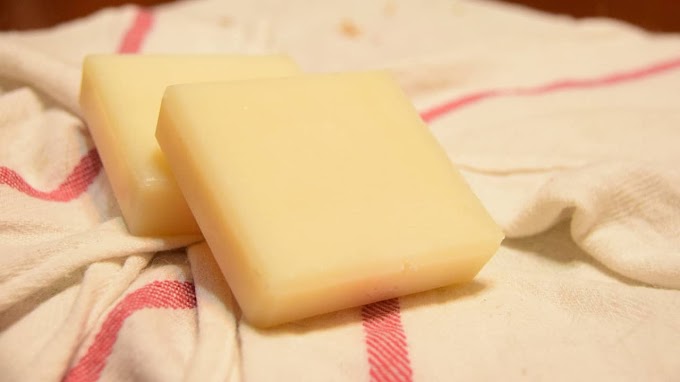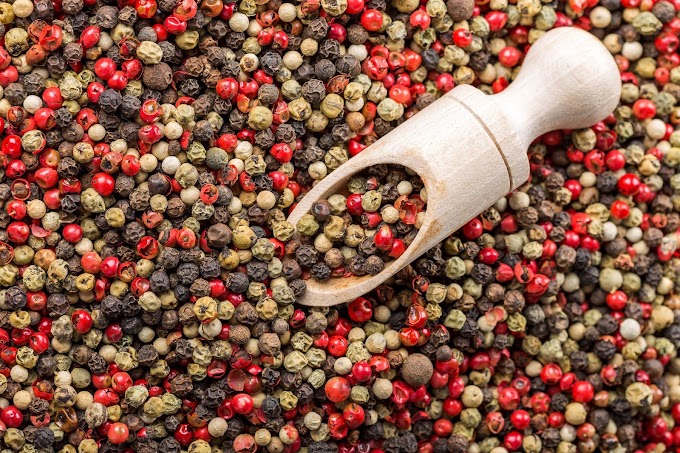 |
| Image by rony michaud from Pixabay |
Water, a fundamental element of life, blankets approximately 71% of our planet's surface. It is indispensable for the survival of all living beings and participates actively in a multitude of natural phenomena.
But have you ever wondered, "Why is water wet?" It's a captivating question that has left many perplexed. Fear not, as we embark on a scientific journey to unravel the secrets behind water's wetness.
In this article, we'll uncover the mysteries concealed within its molecular structure, delve into the enigmatic realm of surface tension, and explore the captivating interactions it shares with other substances. Prepare to quench your thirst for knowledge as we plunge into the mesmerizing world of water. Let's get started!
You may also like:
EXPLAINED: Why Is The Sky Blue?
Interesting Facts About Water
The answer to the question of whether or not water is wet depends on how you define the word "wet." If you define "wet" as "covered or saturated with water," then water is certainly wet. After all, water is made up of water molecules, and water molecules are attracted to each other.
This attraction, called hydrogen bonding, is what gives water its characteristic properties, such as its high surface tension and its ability to dissolve many other substances.
However, if you define "wet" as "causing a sensation of wetness," then the answer is not so clear-cut. When we say that something is wet, we are usually referring to the feeling that we get when we come into contact with a liquid.
This feeling is caused by the water molecules on the surface of the liquid interacting with the molecules on our skin. However, water molecules also interact with each other, so when water is in contact with itself, there is no sensation of wetness.
So, is water wet? It depends on how you define the word "wet." If you define it as "covered or saturated with water," then water is certainly wet. However, if you define it as "causing a sensation of wetness," then the answer is not so clear-cut. Ultimately, it is up to each individual to decide whether or not they believe that water is wet.
Here are some additional arguments for and against the idea that water is wet:
Arguments in favor:
Water is made up of water molecules, which are attracted to each other. This attraction, called hydrogen bonding, is what gives water its characteristic properties, such as its high surface tension and its ability to dissolve many other substances.
When water is in contact with another substance, the water molecules interact with the molecules of the other substance. This interaction can cause the other substance to become wet.
The sensation of wetness is caused by the water molecules on the surface of a liquid interacting with the molecules on our skin.
.jpg) |
| Image by InspiredImages from Pixabay |
Arguments against:
Water is a liquid, and liquids are not typically considered to be wet.
The sensation of wetness is caused by the water molecules on the surface of a liquid interacting with the molecules on our skin. However, when water is in contact with itself, there is no sensation of wetness.
The definition of the word "wet" is subjective, and there is no single definition that everyone agrees on.
The Molecular Dance: Understanding Water's Structure
Water is a simple molecule composed of two hydrogen atoms bonded to a central oxygen atom, forming a bent or V-shaped structure. This unique arrangement gives water its remarkable properties, including its ability to dissolve various substances and exhibit wetness. When water molecules come together, they form an intricate network of hydrogen bonds, creating a cohesive and interconnected system.
Hydrogen Bonding: The Key Player
Hydrogen bonding is a special type of intermolecular force that occurs between the positively charged hydrogen atom of one water molecule and the negatively charged oxygen atom of another water molecule. This attraction is relatively weak but significantly influences the behavior of water. It is this bonding that contributes to the cohesive nature of water and its wetness.
Water's Dipolarity and Polarity
Water is a polar molecule, meaning it has a positive and a negative end. The oxygen atom carries a slight negative charge, while the hydrogen atoms possess a partial positive charge. This polarity allows water molecules to attract and interact with other polar substances. When two objects with different polarities come into contact, water can adhere to their surfaces, leading to the perception of wetness.
Surface Tension: Water's Skin
Water's ability to form droplets and maintain a distinct surface can be attributed to a phenomenon called surface tension. Surface tension arises from the cohesive forces between water molecules at the air-water interface. It acts like an invisible skin on the surface of the water, allowing certain objects to float and creating fascinating patterns, such as water droplets.
The Role of Cohesion
Cohesion is the force of attraction between water molecules due to hydrogen bonding. These intermolecular forces pull water molecules together, creating an inward force that minimizes the surface area of the water. This cohesive nature of water contributes to its ability to maintain droplets and form spherical shapes, which are common in the natural world.
The Surface Layer: A Balancing Act
At the surface of the water, the cohesive forces between water molecules are not balanced with an equal number of attractions from below. This imbalance creates an inward pull that creates a "skin" or surface layer. This surface tension allows insects to walk on water, small objects to float, and even enables the formation of water droplets that we encounter daily.
Interactions with Substances: Water's Versatility
Water's ability to interact with a wide range of substances is another aspect that contributes to its wetness. When water encounters a surface, various factors come into play, including the nature of the material, intermolecular forces, and the surface's ability to attract or repel water.
Adhesion: Sticking Together
Adhesion refers to the attraction between water molecules and other substances. When water encounters a surface with adhesive properties, it tends to spread out and cling to that surface. This phenomenon is evident when water is poured onto a glass, and it forms a thin film instead of beading up.
Capillary Action: The Rise of Water
Capillary action is the ability of a liquid to flow against gravity in a narrow space, such as a tube or porous material. This phenomenon is due to the combined forces of adhesion and cohesion. In the case of water, capillary action allows it to climb up narrow tubes or spaces, defying gravity. This phenomenon is observed in plants, where water is drawn up from the roots to the leaves through the tiny vessels known as the xylem.
Wetting and Non-Wetting Surfaces
When water comes into contact with different surfaces, it can exhibit different behaviors. Some materials are classified as wetting surfaces, where water spreads easily, forming a thin film. Other materials are considered non-wetting surfaces, where water tends to bead up and roll off. The wetting or non-wetting behavior is determined by the balance between adhesive forces between water and the surface and cohesive forces within the water itself.
FAQs about Water's Wetness
Let's address some common questions that arise when pondering the wetness of water:
1. Is water inherently wet?
Water itself is not wet. Wetness is a perception or sensation we experience when water comes into contact with our skin or other materials. Wetness is the result of water molecules adhering to a surface, creating a thin film that gives us the sensation of being wet.
2. What causes the sensation of wetness?
The sensation of wetness is caused by the interaction between water and our sensory receptors in the skin. When water molecules adhere to our skin, they stimulate these receptors, sending signals to our brain that we interpret as wetness.
3. Can water be dry?
Dryness is the absence or lack of moisture. Since water is the epitome of moisture, it cannot be considered dry. However, in certain contexts, we might use the term "dry" to describe a surface that is free of water or lacking moisture.
4. Why does water make objects appear darker?
When water comes into contact with certain materials, it can alter their optical properties, causing them to appear darker. This phenomenon is due to the change in light reflection and absorption caused by the presence of a thin layer of water on the surface.
5. Does the temperature of water affect its wetness?
The temperature of the water does not directly affect its wetness. However, it can influence the rate at which water evaporates and how it interacts with different materials. Warmer water evaporates more quickly, leading to a perception of dryness, while colder water can feel wetter due to its slower evaporation rate.
6. Is wetness subjective?
Wetness can be subjective to some extent. The sensation of wetness can vary depending on individual perception, environmental factors, and the nature of the surface or material being wetted. However, the underlying scientific principles of water's interactions remain consistent.
7. Why is water water wet?
Water itself is not wet. Wetness is the sensation we perceive when a liquid, like water, comes into contact with a solid surface, causing the water molecules to adhere to that surface. Water molecules are attracted to each other due to hydrogen bonding, and when they surround an object, we perceive it as wet. So, water makes things wet, but it is not inherently wet itself.
8. How do you prove water is wet?
You can prove water is wet by observing its ability to make other objects or surfaces wet. When water comes into contact with something dry, it adheres to the surface and creates a sensation of wetness. This demonstrates that water itself is not dry but has the property of making things wet, thus proving it is wet in that context.
9. Why is water wet on surface?
Water is wet on surfaces because of its cohesive and adhesive properties. Water molecules are attracted to each other (cohesion) and to other substances (adhesion). When water touches a surface, its molecules form hydrogen bonds with the molecules on that surface.
This creates a thin layer of water molecules on the surface, which we perceive as wetness. Essentially, water's adhesive nature allows it to stick to surfaces, coating them with a layer of liquid and making them feel wet to the touch.
10. Is water naturally wet?
No, water itself is not naturally wet. Wetness is a sensory perception that we experience when a liquid, such as water, comes into contact with a solid surface. Water, in its liquid form, has the property of making things wet by adhering to their surfaces. However, water, by itself, is not inherently wet; it is a liquid that has the ability to cause wetness when it interacts with other materials.
Conclusion
The wetness of water is a complex concept that can be explained through the molecular structure, surface tension, and interactions with other substances.
Water's ability to form hydrogen bonds, exhibit cohesive forces, and adhere to surfaces contributes to the perception of wetness. Understanding these scientific principles allows us to appreciate the unique properties of water and its importance in our daily lives.
So, the next time you ponder the question, "Why is water wet?" remember the intricate dance of water molecules, the invisible skin of surface tension, and the interactions that create the sensation of wetness. Water's wetness is a fascinating phenomenon that underscores the remarkable nature of this essential substance.
Stay happy, and stay curious! :)
11 Simple Tricks to Reduce Anxiety in The Covid19 Era
10 (Hidden) Benefits of Running a Mile a Day in 2023
.jpg)
.jpg)
.jpg)



.webp)
![200+ Incredible Old English Names Male [With Meanings] 💙](https://blogger.googleusercontent.com/img/b/R29vZ2xl/AVvXsEg6s_IFOBtqp9dQEvWyN_jMD7nWHujIcAmFeMC90fJjkJ-V6EWJjcAeGzLi82gjcdZOygI4CvyomBB08cEGlPpJMHrObznFE7Nw1lq_2akBmxJ1BoicZSplthug8EymBbbq2Uqsj44VMKACHS0QCO90HGxIpHzNUTwD5jF8JC_n_PwDOZz-ddc29ETN0KY/w680/expecting-mom.webp)




